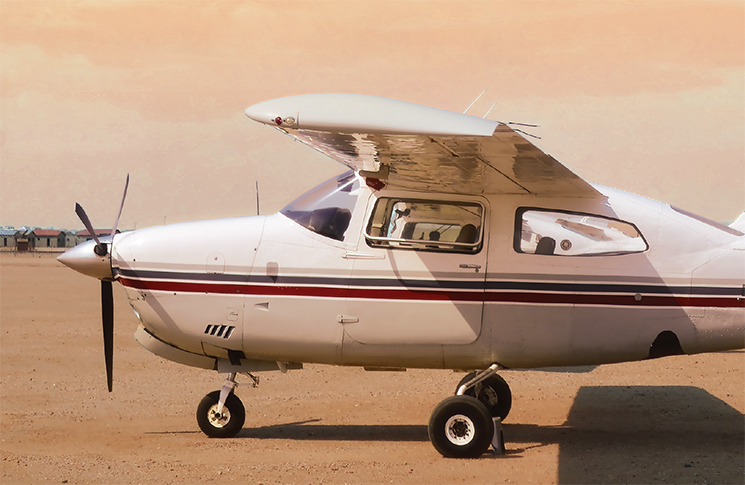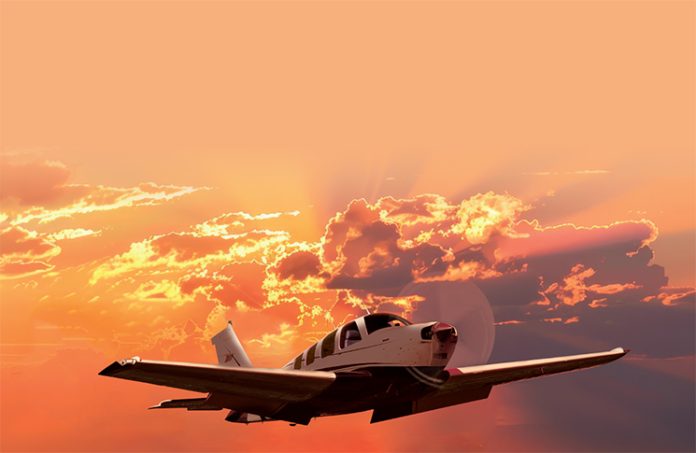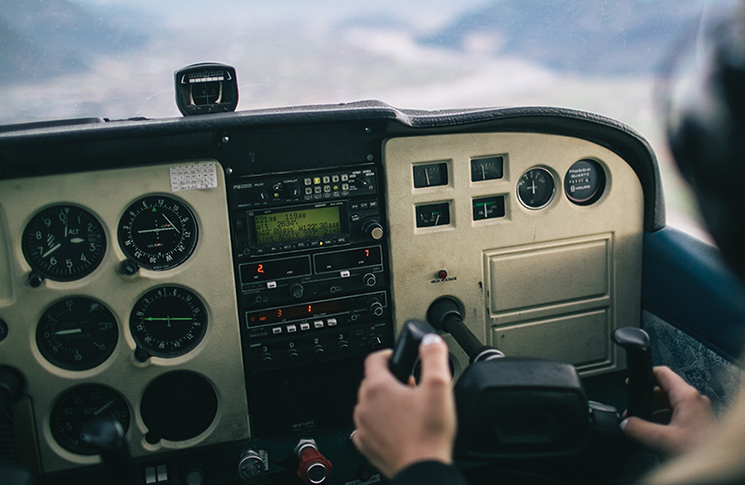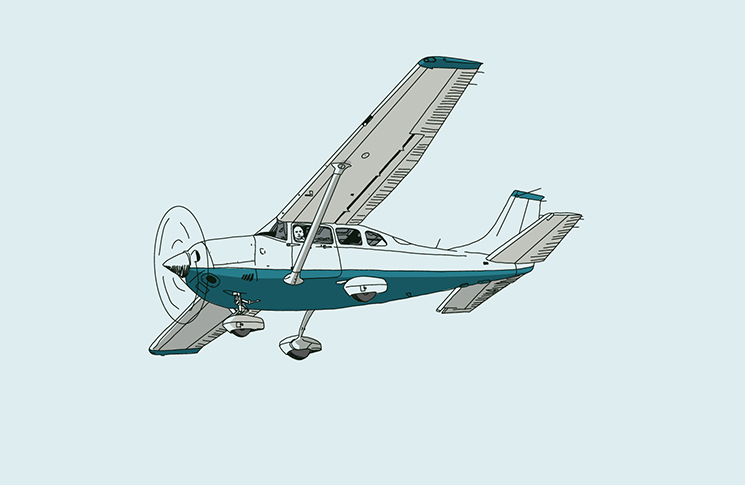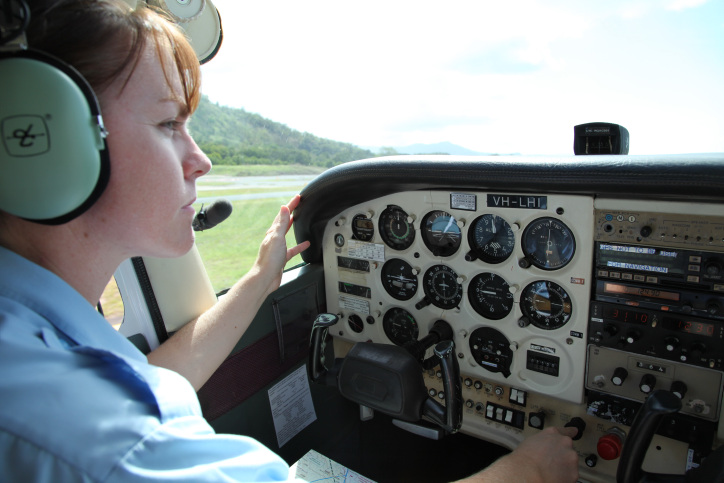Retractable landing gear may mean faster flight and better fuel consumption, but its complexity adds risk. However, there are lessons to be learnt from landing gear failures and tips to help you manage.
Some undercarriage gear failures occur during landing without warning; then there are failures the pilot figures out before they touch down. In these instances, there can be enough time to think and manage the situation.
According to ATSB data from 2003 to 2023, of 14,162 general aviation operational occurrences reported, 243 were a ‘wheels-up’ landing (including ‘collapsed on landing’ occurrences). Of the 22,281 commercial aviation operational occurrences reported, 78 were a ‘wheels-up’ landing. That’s 321 across both sectors, more than one a month.
Of those occurrences, 314 reported nil injuries, 7 minor injuries, and nil serious or fatal injuries. Statistically at least, a gear-up, or partial gear-up, landing is rare – and survivable.
Many of the reported occurrences were unexpected, caused by simple human error. Pilots reported they ‘did not’, ‘forgot to’ or ‘omitted to’ extend the landing gear. Of those occurrences, distraction is often cited as the preliminary cause:
- Exmouth, WA, 2014: on final approach, the pilot of a Mooney M-20 became distracted by kangaroos on the runway and did not extend the landing gear.
- Northam, WA, 2014: the crew became distracted by radio communications and forgot to lower the landing gear.
- Gove Aerodrome, NT, 2014: a Cessna 210 pilot, distracted by the engine running rough and electrical issues, observed the flaps had failed to lower but did not notice the landing gear had not extended.
These instances simply highlight the importance of checklists and pre-landing checks.
However, despite many unexpected incidents, there were just as many where the pilot received an unsafe gear indication, visually detected that the gear was not down, or did not hear gear lock into place.
A hard grind: case studies
Don Gordon, a Melbourne pilot, performed an emergency belly landing in a twin-engine Piper Aztec at Moorabbin Airport in the late 1970s. A broken link in one of the retraction units meant he ‘never got a light’ to indicate the wheels were down. He remembers the moment he realised the situation, after attempting all the troubleshooting and emergency extension procedures from the handbook and flying around for a while talking to tower. ‘I had no option but to figure out how to safely put it on the ground!’ he says.
I had no option but to figure out how to safely put it on the ground!
‘You go into procedure mode. You just have to remain calm and consider every option, everything that might matter for a safe landing. Wind, angle of descent, control surfaces, the possibility of having to go around, fuel, the runway surface, the speed you want to touch down at … It’s all going through your head. And then you just have to do it.’
Recently, a short flight out of Aldinga Airfield, in South Australia, ended with a wheels-up landing for Ron Logan, an instructor with 30-years’ flight experience. ‘There were lots of lessons that day,’ he says. ‘The first one was a small but good lesson.’
The planned ten-minute flight to check an autopilot issue in a Baron turned out to be nearly 2 hours in the air, burning off a significant fuel load and co-ordinating with emergency services for the safest possible wheels-up landing.
On approach, Logan didn’t get the 3 green lights. After troubleshooting and ‘jiggling the aircraft around a bit’, he felt lucky to have a bluetooth headset. He phoned the airfield’s chief engineer, who visually confirmed one leg was not down. ‘Well, if I can’t have them all down, I will have to have them all up,’ Logan thought. Thankfully, the emergency extension procedure operated in reverse to retract the gear that was down.
Logan then set up a normal approach as a test. ‘That’s when I discovered I also didn’t have flaps!’
With no operational flaps or landing gear, he was convinced it was an electrical fault. Flying a faulty aircraft to Adelaide, over densely populated areas, wasn’t a good option. Aldinga was it, and he declared an emergency.
Although balancing the aircraft’s flapless speed to be slow enough without stalling proved challenging, Logan ultimately walked away from what could be described as a ‘textbook’ belly landing – although there’s simply no textbook on how to do it.
All the pilots interviewed described their state of mind while preparing for a belly landing as procedural or calm, relying on their training and emergency mindset.
Most described the touchdown itself as ‘pretty routine’, that is, until the aircraft began to slide to a stop:
- The landing itself felt normal until it slowed down. It hit the ground first at the back near the rear door and you could really hear the scraping.
- A bit like slamming the brakes on in a car.
- I still had some rudder but lost a bit of directional control.
Many modes: retractable failures
Like shoulders or hips, retractable undercarriages are complex engineering designs with multiple possible points of failure. Depending on the cause, one landing gear unit can fail, more than one, or all.
The ATSB database reveals various causes of landing gear failures:
- an electrical solenoid in the down lock failed
- faulty landing gear motor
- hydraulic flare fitting had failed on the landing gear pressure line
- wear on the landing gear door
- left-gear actuator had fractured
- a wasp nest blocking the static port in the landing gear powerhead
- stuck microswitch in the landing gear system
- a retaining pin had failed allowing the undercarriage pivot pin to dislodge.
The retractable gear engineering, and their emergency procedures and systems, vary across aircraft types. And the mitigating circumstances in a wheels-up landing – weather, runway condition, fuel reserves, other traffic issues, human factors, etc – are never the same.
Pilots of retractable aircraft are trained to use the emergency gear system but if that doesn’t work, it becomes their responsibility to figure out the pertinent factors and plan to land.
Tea time: your Jack Absolom moment
In moments of trouble, a pilot friend of mine has a saying, ‘Let’s have an Absolom moment’. Jack Absolom was an iconic Aussie TV presenter in the 1970s and 1980s, travelling to remote outback locations in his Chrysler Sigma, describing bush survival techniques on his show, Absolom’s Outback.
His signature advice in an emergency (no, this isn’t a Russell Coight thing) was, ‘Now, before you do anything – stop and think. Find some shade, make a billy of tea and have a good think about it all.’ As pilots, we can’t pull up somewhere shady, nor make a billy of tea. But we can try and find some clean air, take a few calming breaths, a swig from our water bottle and we might have time to have a big think.
Drawn from the lived-experience interviews and the ATSB’s occurrence summaries, here are some things to consider. By no means is this a list of every piece of information you may need – each pilot, aircraft and situation have different considerations – but it’s a start to get you imagining what you might need to think about or do. (Aviate. Navigate. Communicate.)
Note: It’s up to you to declare an emergency – doing so allows ATC to allocate you priority status, notify emergency agencies and other actions as needed.
You’ve discovered a landing-gear malfunction
If you’re on approach, then go around, manage the aircraft configuration, ascertain fuel level and, if possible, or necessary, navigate to clear airspace. If in controlled airspace, contact tower. Can they ascertain the status of the undercarriage? If you’re at a smaller airfield, perhaps someone on the ground can help?
Adopt an emergency mindset – doing so can put you in the right frame of mind where training and practising for emergencies kicks in, allowing you to focus on the task at hand. And put people first. If you’re prioritising actions that reduce damage to the aircraft, you will increase your workload and decrease the margin for error, de-prioritising human life. Damage to the aircraft should not be your main consideration but keeping it intact will mean you and your passengers have a better chance.
Troubleshoot circuit breakers, switches, loose, knocked, jammed or stuck levers, cables or handles. Can you phone the operator or maintenance organisation?
Use the relevant pilot’s operating handbook or aircraft flight manual to find the emergency gear extension procedure.
Emergency gear extension procedures can be complicated and exhausting; Bonanza emergency release gear requires around 50 turns to extend fully. In a GAF Nomad, you had to pump a lever 140 times! And you still have to fly the plane, monitor fuel and be situationally aware.
When the gear fault cannot be rectified
Workload: reduce workload to the immediate task at hand (for example, landing with wheels not in the correct configuration). Can you delegate any tasks?
Airfield: divert to another airfield. Are there better options available elsewhere, such as better wind conditions or runway options, or emergency services? (ATC can assist.) Do you have enough fuel to do so? If staying is better, do you need to burn off fuel?
Most described the touchdown itself as ‘pretty routine’, that is, until the aircraft began to slide to a stop.
Landing gear configuration: would a partial wheels-up landing be safer than a belly landing? Are there parts of the fuselage that might impede or affect the landing? (Logan’s Baron had a footstep that scraped on the ground as it landed, causing it to veer slightly right).
Fuselage and control surface landing configuration: nose attitude, flaps, airbrakes, trims, wings level? If one wing touches first, what veering might be experienced? Rudder control?
Approach: reduction of speed without the added drag of landing gear? What about going around if you’re too fast on approach? Approach angle? Should you extend final with a flatter approach? Where’s the best touch down point? Stall speed matters – belly flopping into the runway could be disastrous. Do some test approaches.
Runway: consider length and surface. Bitumen might pull you up quicker, but friction of metal on tarmac may cause sparks. What might the slide look like on emergency foam? Grass might offer less friction but wet grass can be slippery and the aircraft might slide into trouble or veer suddenly if potholes or bumps catch on the fuselage or propeller.
Emergency landing procedures: review the aircraft’s emergency procedures: magnetos, master, mixture, fuel cock, harnesses, hatches. Plan how to exit the aircraft as swiftly as possible.
Sanity checks: Breathe and ask yourself: does what I’m proposing make my landing as safe as possible? Is it really a good idea? Discuss your plan with whoever you need to.
Plan the landing and fly the plan
Unlike other types of emergencies, a wheels-up or partial wheels-up landing with sufficient warning may mean you have the luxury of some time to plan how to survive the landing. If only you could find some shade and boil a billy.
A ‘textbook’ response to a landing gear failure, courtesy ATSB:
On 11 November 2014, at about 1130 Eastern Standard Time, a Cessna 210 aircraft, registered VH-JGA (JGA), departed from Cairns Airport, Queensland, for a scenic flight over Green Island and Arlington Reef with the pilot and 4 passengers on board. After about half an hour of local flying, the pilot returned JGA to Cairns Airport. During the approach, at about 1,000 ft above ground level, the pilot selected the landing gear down; however, the green landing gear down indicator light did not illuminate.
The pilot advised the Cairns Tower air traffic controller that JGA would conduct a missed approach and requested a clearance to hold over the sea to determine the reason for the malfunction. While holding over the sea, in the vicinity of Cairns Airport, at about 1,000 ft, the pilot conducted a landing gear emergency extension, but the left main landing gear still did not lock in the down position.
The pilot contacted the operator and maintenance organisation via a mobile phone and conducted extensive troubleshooting but was unable to get the left main landing gear to lock in the down position. The pilot of JGA conducted 2 practice approaches to assess the aircraft configuration and landing area before beginning the approach for a wheels-up landing.
The pilot extended the flaps to help slow the aircraft and, after turning onto a long final, briefed the passengers for the landing and instructed them to take up the brace position. Just prior to touchdown, the pilot turned off the master switch and moved the engine mixture control to the cut-off position. At about 1416, the aircraft landed on the fuselage underside on the grass area abeam runway 33 and came to a stop. The pilot and 4 passengers were uninjured and the aircraft was substantially damaged.
